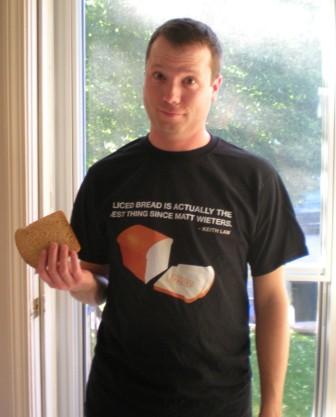I’ve got some radio coming up: ESPN Radio today at 5:40 pm EDT, then Denver 104.3 FM at 4 pm MDT. Mike & Mike tomorrow morning at 8:25 am EDT. Local ESPN affiliates in Pittsburgh (10:40 am), Los Angeles 710 (12 noon PDT), and Atlanta (3:30 pm).
I was on the ESPN Fantasy podcast today (scroll down to 7/8). If you haven’t downloaded it already, check out the podcast Jason Churchill and I did yesterday.
Yesterday’s radio hits: Baseball Tonight, The Herd.
Right now I am scheduled to chat tomorrow at 1 pm.
Oh, and I asked a friend in Toronto’s PR department. It’s “zep-CHIN-skee.”
